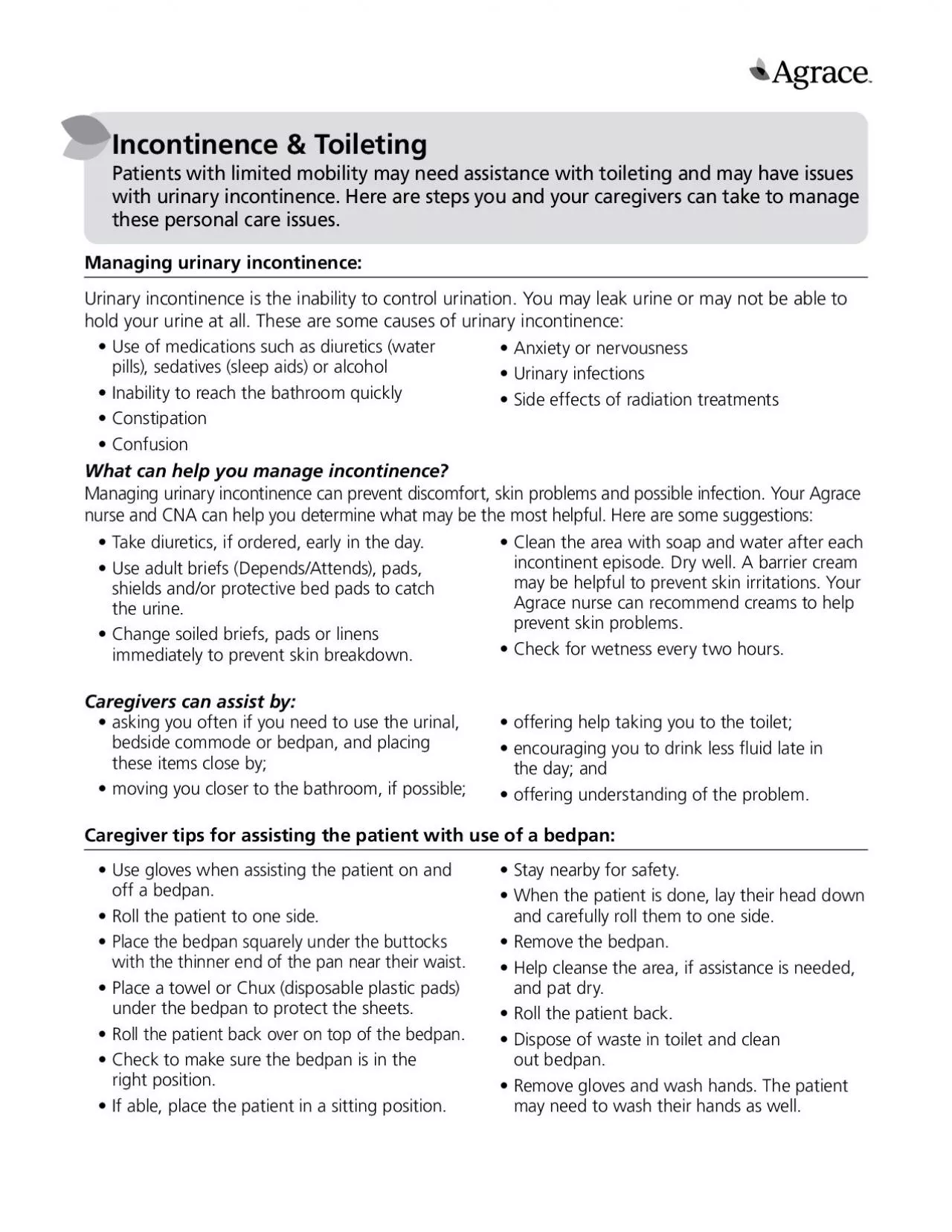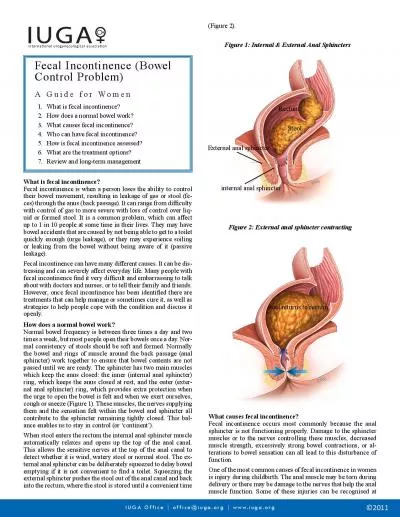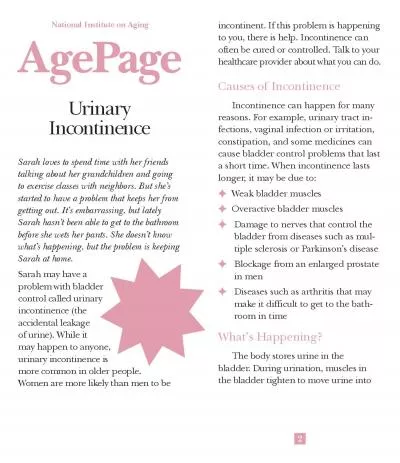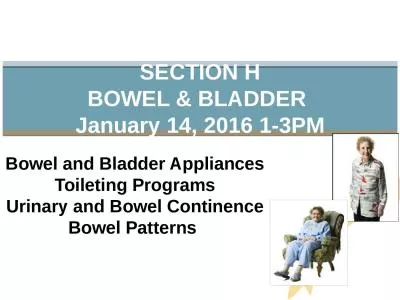PDF-Incontinence Toileting
Author : lily | Published Date : 2022-10-28
Patients with limited mobility may need assistance with toileting and may have issues with urinary incontinence Here are steps you and your caregivers can take
Presentation Embed Code
Download Presentation
Download Presentation The PPT/PDF document "Incontinence Toileting" is the property of its rightful owner. Permission is granted to download and print the materials on this website for personal, non-commercial use only, and to display it on your personal computer provided you do not modify the materials and that you retain all copyright notices contained in the materials. By downloading content from our website, you accept the terms of this agreement.
Incontinence Toileting: Transcript
Download Rules Of Document
"Incontinence Toileting"The content belongs to its owner. You may download and print it for personal use, without modification, and keep all copyright notices. By downloading, you agree to these terms.
Related Documents














